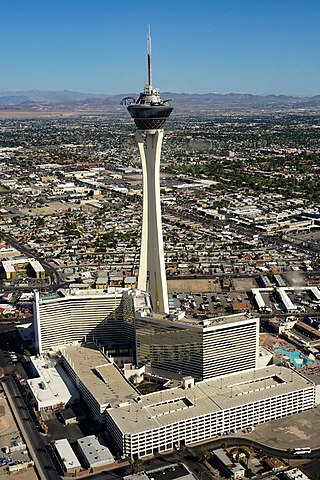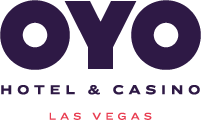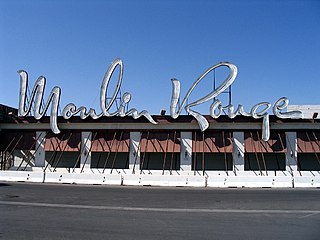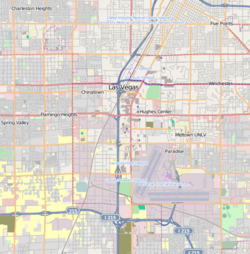
The Strat Hotel & Casino & Tower is a hotel and casino located in Las Vegas, Nevada, United States. It includes a 1,149 ft (350.2 m) observation tower, the tallest in the United States. It is also the second-tallest observation tower in the Western Hemisphere, surpassed only by the CN Tower in Toronto, Ontario. The tower is topped by a skypod which includes a revolving restaurant, lounges, and observation decks. The top of the tower also has several thrill rides. The hotel and casino facilities are situated at the base of the tower, and the resort also includes a showroom and a shopping mall. The Stratosphere is located within city limits on Las Vegas Boulevard, just north of the Las Vegas Strip. The resort is sometimes considered to be a Strip property, although Clark County does not officially recognize it as such, stating that the Strip does not extend into city limits.

Circus Circus Las Vegas is a hotel and casino located on the northern Las Vegas Strip in Winchester, Nevada. It is owned and operated by Phil Ruffin. Circus Circus includes the largest permanent circus in the world. It features circus and trapeze acts, as well as carnival games, at its Carnival Midway. The resort also includes the Adventuredome, an indoor amusement park.

The Stardust Resort and Casino was a casino resort located on 60 acres (24 ha) along the Las Vegas Strip in Winchester, Nevada. The Stardust was conceived by Tony Cornero, and construction began in 1954. Cornero died in 1955, and the project was taken over by his brother. The Stardust had numerous creditors, and construction was stopped in 1956, when the project ran out of money.
The Hacienda was a hotel and casino on the Las Vegas Strip in Paradise, Nevada, that operated from 1956 to 1996. It was opened by Warren Bayley, who owned other Hacienda properties in California as well. Bayley opened the hotel portion in June 1956, although the opening of the casino was delayed as the Nevada Gaming Control Board objected to his choice of casino manager, Jake Kozloff. The casino portion eventually opened on October 17, 1956. The $6 million property had 266 rooms and the largest pool on the Las Vegas Strip. Like its sister properties in California, the resort included a neon sign that depicted a cowboy riding a palomino horse.

Robert Edward Stupak was an entrepreneur who became a Las Vegas casino developer and owner. He was also a poker player, winning titles at the World Series of Poker and the Super Bowl of Poker. He also competed on the World Poker Tour, and various other tournaments, as well as cash games, including High Stakes Poker on GSN. He once played a computer for half a million dollars and won.

The DunesHotel & Country Club was a hotel and casino on the Las Vegas Strip in Paradise, Nevada. It opened on May 23, 1955, as the tenth resort on the Strip. It was initially owned by a group of businessmen from out of state, but failed to prosper under their management. It also opened at a time of decreased tourism, while the Strip was simultaneously becoming overbuilt with hotel rooms. A few months after the opening, management was taken over by the operators of the Sands resort, also on the Strip. This group failed to improve business and relinquished control less than six months later.

The Landmark was a hotel and casino located in Winchester, Nevada, east of the Las Vegas Strip and across from the Las Vegas Convention Center. Frank Caroll, the project's original owner, purchased the property in 1961. Fremont Construction began work on the tower that September, while Caroll opened the adjacent Landmark Plaza shopping center and Landmark Apartments by the end of the year. The tower's completion was expected for early 1963, but because of a lack of financing, construction was stopped in 1962, with the resort approximately 80 percent complete. Up to 1969, the topped-off tower was the tallest building in Nevada until the completion of the International Hotel across the street.

Horseshoe Las Vegas is a casino hotel on the Las Vegas Strip in Paradise, Nevada. It is owned and operated by Caesars Entertainment. It originally opened as the MGM Grand Hotel and Casino on December 4, 1973. The 26-story hotel contained 2,100 rooms and was among the world's largest hotels.

El Rancho Vegas was a hotel and casino at the north end of the Las Vegas Strip in Winchester, Nevada. It opened in 1941, as the first resort on the Strip, known then as part of Highway 91. It was located at what is now the southwest corner of Las Vegas Boulevard and Sahara Avenue. The El Rancho Vegas was conceived by Thomas Hull, who owned several hotels in California and wanted to expand his operations to Las Vegas. He decided to build his new resort along Highway 91, on desert land located just outside of city limits. Hull intended to target motorists traveling from Los Angeles to Las Vegas, although his remote location was met with skepticism.

Sahara Las Vegas is a hotel and casino located on the Las Vegas Strip in Winchester, Nevada. It is owned and operated by the Meruelo Group. The hotel has 1,616 rooms, and the casino contains 50,662 square feet (4,706.7 m2). The Sahara anchors the northern end of the Las Vegas Strip, at the corner of Sahara Avenue. It is the site of the northernmost station of the Las Vegas Monorail.

Palace Station is a hotel and casino located in Las Vegas, Nevada. It is owned and operated by Station Casinos, and is the company's oldest property. It includes an 84,000 sq ft (7,800 m2) casino and 575 rooms. Palace Station originally opened as The Casino on July 1, 1976, attached to the Mini Price motel. It was expanded and renamed a year later as Bingo Palace. The ownership group included Frank Fertitta Jr., who bought out his partners in 1979.

Oyo Hotel & Casino is a casino hotel near the Las Vegas Strip in Paradise, Nevada, United States. It is owned by Highgate and Oyo Hotels & Homes, and its casino is operated by Paragon Gaming. It is located east of the Strip and next to the Tropicana resort. The hotel has 696 rooms with a 30,000-square-foot (2,800 m2) casino.

Binion's Gambling Hall & Hotel, formerly Binion's Horseshoe, is a casino on Fremont Street along the Fremont Street Experience mall in Downtown Las Vegas, Nevada, United States. It is owned by TLC Casino Enterprises. The casino is named for its founder, Benny Binion, whose family ran it from its founding in 1951 until 2004. The hotel, which had 366 rooms, closed in 2009. TLC reopened 81 of the rooms as a boutique hotel called Hotel Apache in July 2019.

The Moulin Rouge Hotel was a hotel and casino in West Las Vegas, Nevada, that was listed on the U.S. National Register of Historic Places in 1992. Although its peak operation lasted only six months in the second half of 1955, it was the first desegregated hotel casino and was popular with many of the Black entertainers of the time, who would entertain at the other hotels and casinos and stay at the Moulin Rouge.
The El Rancho Hotel and Casino was a hotel and casino that operated on the Las Vegas Strip in Winchester, Nevada. It originally opened on September 2, 1948, as the Navajo-themed Thunderbird. At the time, it was owned by building developer Marion Hicks and Lieutenant Governor of Nevada Clifford A. Jones. A sister property, the Algiers Hotel, was opened south of the Thunderbird in 1953. During the mid-1950s, the state carried out an investigation to determine whether underworld Mafia figures held hidden interests in the resort. Hicks and Jones ultimately prevailed and kept their gaming licenses. Hicks died in 1961, and his position as managing director was taken over by Joe Wells, another partner in the resort. Wells added a horse racing track known as Thunderbird Downs, located behind the resort. The Thunderbird also hosted numerous entertainers and shows, including Flower Drum Song and South Pacific.
Key Largo was a hotel and casino located on 4.85 acres (1.96 ha) of land at 377 East Flamingo Road, one mile east of the Las Vegas Strip, in Paradise, Nevada.
The Aladdin was a hotel and casino located on the Las Vegas Strip in Paradise, Nevada. Toy manufacturer Edwin S. Lowe originally opened the 450-room Tallyho Hotel on the property in 1962. The Tallyho was the only major hotel in Nevada to not include a casino; it closed at the end of the year and was sold to Kings Crown Inns of America, a hotel chain which reopened the property a month later as the King's Crown Tallyho. The company added a casino and showroom but plans to open the casino were halted when the Nevada Gaming Control Board declined to issue a gambling license because of concerns about the resort being inadequately financed.


















